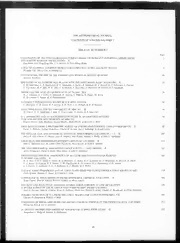
Python Microservices Development: Build efficient and lightweight microservices using the Python tooling ecosystem, 2nd Edition PDF
Preview Python Microservices Development: Build efficient and lightweight microservices using the Python tooling ecosystem, 2nd Edition
Python Microservices Development Second Edition Build efficient and lightweight microservices using the Python tooling ecosystem Simon Fraser Tarek Ziadé BIRMINGHAM—MUMBAI Python Microservices Development Second Edition Copyright © 2021 Packt Publishing All rights reserved. No part of this book may be reproduced, stored in a retrieval system, or transmitted in any form or by any means, without the prior written permission of the publisher, except in the case of brief quotations embedded in critical articles or reviews. Every effort has been made in the preparation of this book to ensure the accuracy of the information presented. However, the information contained in this book is sold without warranty, either express or implied. Neither the author(s), nor Packt Publishing or its dealers and distributors, will be held liable for any damages caused or alleged to have been caused directly or indirectly by this book. Packt Publishing has endeavored to provide trademark information about all of the companies and products mentioned in this book by the appropriate use of capitals. However, Packt Publishing cannot guarantee the accuracy of this information. Producer: Shailesh Jain Acquisition Editor – Peer Reviews: Saby D'Silva Project Editor: Rianna Rodrigues Content Development Editor: Alex Patterson Copy Editor: Safis Editing Technical Editor: Karan Sonawane Proofreader: Safis Editing Indexer: Rekha Nair Presentation Designer: Pranit Padwal First published: July 2017 Second edition: September 2021 Production reference: 1280921 Published by Packt Publishing Ltd. Livery Place 35 Livery Street Birmingham B3 2PB, UK. ISBN 978-1-80107-630-2 www.packt.com Contributors About the authors Simon Fraser is a Site Reliability Engineer for Cisco Meraki. He has over twenty years of experience in computing, both developing and running systems. He has worked as a Systems Administrator for an internet service provider; an infrastructure and high-performance computing engineer at the Welcome Sanger Institute, and as a Firefox Release Engineer at Mozilla. He studied Cybernetics and Computer Science at the University of Reading and has also taught academic courses in programming for scientists. I would like to thank Emma Apted and Helen Cook for their frequent support and encouragement, ranging from proofreading to miming a book opening when I'm clearly not working. My father George Fraser passed on his immeasurable skill at finishing a project just before the deadline, and my mother Elizabeth Fraser showed me how to explain concepts and inform people through years of teaching. This book would also not be possible without Tarek Ziadé's work on the 1st edition and the solid base on which to build, as well as the work of Development Editor Alex Patterson, Reviewer William Kahn-Greene, and Project Editor Rianna Rodrigues. We might stand on the shoulders of giants, but we also build on a huge structure made by every one of us, so I would also like to thank everyone I've worked with over the years in all my different teams. Yes, even you. Tarek Ziadé is a Software Engineer, located in Burgundy, France. He works at Elastic, building tools for developers. Before Elastic, he worked at Mozilla for 10 years, and he founded a French Python user group, called AFPy. Tarek has also written several articles about Python for various magazines, and a few books in French and English. I would like to thank Freya, Suki, Milo, and Amina for being so supportive of all my book projects. About the reviewer Will Kahn-Greene has been building things in Python and other languages since the late 90s. He manages the crash ingestion pipeline at Mozilla and maintains several Python libraries. When he's waiting for CI to run tests, he builds things with wood, tends his tomato plants, and cooks for four. Table of Contents Preface xi Chapter 1: Understanding Microservices 1 The origins of service-oriented architecture 2 The monolithic approach 3 The microservice approach 8 Microservice benefits 10 Separation of concerns 10 Smaller projects 10 Scaling and deployment 11 Pitfalls of microservices 12 Illogical splitting 12 More network interactions 13 Data storing and sharing 13 Compatibility issues 14 Testing 14 Implementing microservices with Python 15 How web services work 16 The WSGI standard 16 Workers, threads, and synchronicity 17 A worker pool approach 17 Being asynchronous 18 Twisted, Tornado, Greenlets, and Gevent 19 Asynchronous Python 19 Language performance 21 Summary 24 [ v ] Table of Contents Chapter 2: Discovering Quart 25 Making sure we have Python 27 How Quart handles requests 28 Routing 32 Variables and converters 33 The url_for function 37 Request 37 Response 38 Quart's built-in features 40 The session object 40 Globals 41 Signals 42 Extensions and middleware 44 Templates 46 Configuration 48 Blueprints 50 Error handling 52 Custom error handler 52 A microservice skeleton 54 Summary 57 Chapter 3: Coding, Testing, and Documentation: the Virtuous Cycle 59 Different kinds of tests 62 Unit tests 63 Functional tests 67 Integration tests 70 Load tests 71 End-to-end tests 75 Using pytest and tox 76 Developer documentation 80 Tools for documentation 81 Version control 85 Continuous Integration and Continuous Deployment 86 GitHub Actions 87 Documentation 88 Coveralls 89 Badges 89 Summary 90 [ vi ] Table of Contents Chapter 4: Designing Jeeves 91 The Jeeves bot 92 User stories 92 Monolithic design 93 Model 94 View and template 97 A human-readable view 100 Slack workspaces 103 Taking actions 107 OAuth tokens 108 Authentication and authorization 109 Background tasks 113 Putting together the monolithic design 116 Summary 118 Chapter 5: Splitting the Monolith 119 Identifying potential microservices 119 Code complexity and maintenance 121 Metrics and Monitoring 122 Logging 128 Splitting a Monolith 131 Feature Flags 135 Refactoring Jeeves 137 Workflow 139 Summary 140 Chapter 6: Interacting with Other Services 141 Calling other web resources 142 Finding out where to go 145 Environment variables 145 Service discovery 145 Transferring data 146 HTTP cache headers 147 GZIP compression 149 Protocol Buffers 152 MessagePack 153 Putting it together 155 Asynchronous messages 155 Message queue reliability 156 Basic queues 156 [ vii ] Table of Contents Topic exchanges and queues 157 Publish/subscribe 161 Putting it together 162 Testing 162 Using OpenAPI 164 Summary 165 Chapter 7: Securing Your Services 167 The OAuth2 protocol 168 X.509 certificate-based authentication 170 Token-based authentication 173 The JWT standard 174 PyJWT 176 Using a certificate with JWT 177 The TokenDealer microservice 179 The OAuth implementation 180 Using TokenDealer 184 Securing your code 186 Limiting your application scope 187 Untrusted incoming data 189 Redirecting and trusting queries 192 Sanitizing input data 193 Using Bandit linter 194 Dependencies 195 Web application firewall 195 OpenResty: Lua and nginx 196 Rate and concurrency limiting 199 Other OpenResty features 201 Summary 202 Chapter 8: Making a Dashboard 203 Building a ReactJS dashboard 205 The JSX syntax 205 React components 206 Pre-processing JSX 211 ReactJS and Quart 212 Cross-origin resource sharing 213 Authentication and authorization 215 A note about Micro Frontends 216 Getting the Slack token 218 JavaScript authentication 220 Summary 221 [ viii ] Table of Contents Chapter 9: Packaging and Running Python 223 The packaging toolchain 224 A few definitions 225 Packaging 226 The setup.py file 226 The requirements.txt file 231 The MANIFEST.in file 234 Versioning 235 Releasing 238 Distributing 239 Running all microservices 242 Process management 243 Summary 245 Chapter 10: Deploying on AWS 247 What is Docker? 248 Introduction to Docker 251 Running Quart in Docker 255 Docker-based deployments 257 Terraform 259 Service discovery 261 Docker Compose 263 Docker Swarm 265 Kubernetes 267 Summary 272 Chapter 11: What's Next? 275 Automation 275 Scaling 276 Content Delivery Networks 277 Multi-cloud deployments 277 Lambda Functions 277 Expanding monitoring 278 Making promises 278 Summary 280 Other Books You May Enjoy 283 Index 287 [ ix ]
The list of books you might like

The 48 Laws of Power

Rich Dad Poor Dad

The Spanish Love Deception

Believe Me

Masters at Arms

Healthcare Financial Management 1993: Vol 47 Index

Bürofach-/Handelsdiplom VSH Med. Sachbearbeiterin+ Röntgen-Grundkurs

Bürgerliches Recht Band II Schuldrecht Allgemeiner Teil

Mitigation of Natural Hazards and Disasters: International Perspectives
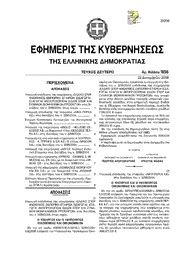
Greek Government Gazette: Part 2, 2006 no. 1856

CA APM 10 機能紹介資料
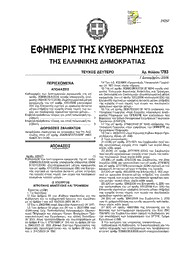
Greek Government Gazette: Part 2, 2006 no. 1783
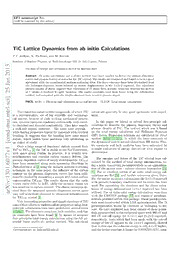
TiC lattice dynamics from ab initio calculations

by Andy Farnell

Thin Solid Films 1993: Vol 229 Index

Cozinhe com os monges
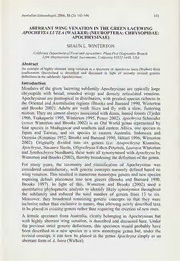
Aberrant wing venation in the green lacewing Apochrysa lutea (Walker) (Neuroptera: Chrysopidae: Apochrysinae)

General Subjects 1993: Vol 1158 Index

